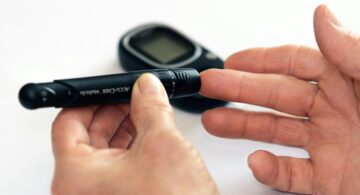Smart Moves: Steering Clear of Common Exercise Pitfalls
Discover how to optimize your workout routine to manage high blood sugar effectively, while steering clear of common pitfalls in physical activity. In the current climate, prioritizing health is more crucial than ever. Individuals with high blood sugar, in particular, need to be mindful of their well-being, as they may face a higher risk of complications if infected with the novel coronavirus. However, staying active can significantly contribute to managing high blood sugar, provided it’s done intelligently. Here are some key mistakes to avoid in your workout routine for a safer and more effective approach, as recommended by experts.
1. Not Testing Blood Sugar Beforehand
Before engaging in exercise, it’s crucial to know your blood sugar levels. Testing your glucose levels is essential, and the American Council on Exercise recommends avoiding workouts if levels exceed 250 milligrams per deciliter (mg/dL) or are above 300 mg/dL without ketosis. Conversely, if levels are below 100 mg/dL, have a snack beforehand.
2. Skipping Water Breaks
Dehydration can cause blood sugar levels to rise. Opt for water over sugary sports drinks, aiming to drink 4 to 6 ounces every 15 to 20 minutes or when thirsty. This helps combat dehydration, a common issue for individuals with high blood sugar.
3. Forgetting an Emergency Kit
While exercise enhances glucose management, it’s crucial to be prepared for potential low blood sugar. Carry a glucometer, fast-acting insulin (if applicable), and quickly digestible carbohydrate sources. Having a snack with 15 grams of carbohydrates, like dried fruit, can help if you feel lightheaded or weak.
4. Wearing Inappropriate Footwear
People with high blood sugar should prioritize breathable socks and well-fitting shoes to protect their feet. Proper footwear not only supports daily physical activity but also reduces the risk of cuts or scrapes that may take longer to heal due to higher blood sugar and decreased circulation.
5. Ignoring What Your Body Is Telling You
Regardless of high blood sugar, listening to your body during a workout is essential. Avoid pushing yourself too hard initially, and if you feel dizzy or unwell, take a break to recover. Paying attention to your body’s signals ensures a safe and effective exercise routine.
6. Not Finding Something You Enjoy
The most significant mistake is avoiding exercise altogether. Discovering an activity you love makes staying active more enjoyable. Whether it’s trying Zumba, walking with a friend, or exploring other options, finding pleasure in exercise increases the likelihood of maintaining a consistent routine, complementing a healthy diet for better high blood sugar management.



















